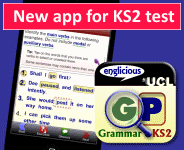Glossary: mode
Explanation
The channel by which language is produced, i.e. spoken or written. Spoken and written language are often referred to as the two modes of language. In addition, linguists sometimes discuss text messaging or internet chat rooms as representing a mixed-mode, containing features of both spoken and written language.
Englicious contains many resources for English language in schools, but the vast majority of them require you to register and log in first. For more information, see What is Englicious?

